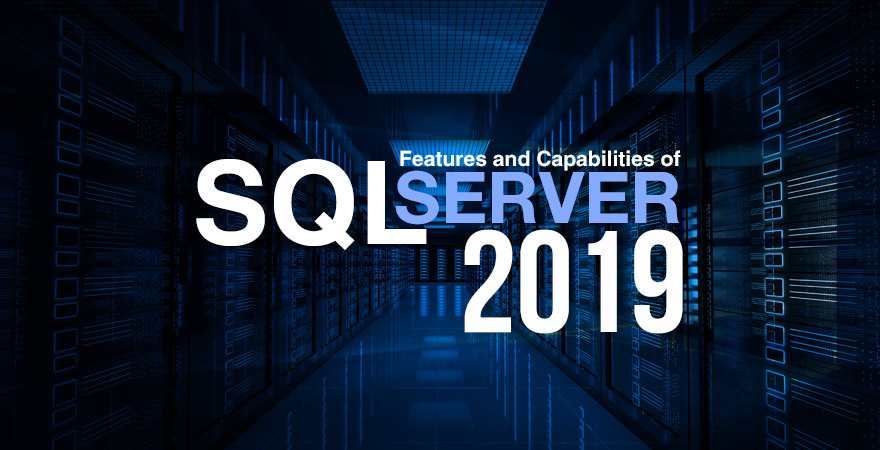Microsoft is one of the leading global players in the Cloud Based Solutions industry. Going into the cloud, Microsoft enjoyed a natural edge in the market in the form of a well-established Windows Operating System (OS). Therefore, it comes as little surprise that Microsoft has made serious inroads in the Cloud Solutions market.

Emergence of Hybrid Cloud
Over the past year or so, a major market trend has been the emergence of Hybrid Cloud Infrastructures. Most organizations that go for a cloud based solution do not feel comfortable with the idea of migrating completely over to the cloud infrastructure.
Also Read: Comparing Microsoft SQL Standard vs. Enterprise
[pdfviewer width=”800px” height=”849px” beta=”true/false”]https://www.dincloud.com/wp-content/uploads/pdfs/SQL-Server-2019.pdf[/pdfviewer]
Concerns around Full Migration
We can break down the concerns surrounding any cloud migration into two main types, namely efficiency and security. The efficiency related concerns stem from the reliance on the internet that serves as an enabler for data transmission between the Cloud Service Provider (CSP) and the cloud tenant.

The speed of internet, regardless of bandwidth, is dependent on a host of factors and most of these factors are beyond the control of both the CSP and the cloud user. This can give rise to latency that may potentially disrupt the core product or service of the entity using the cloud based solution.
Apart from lag, the other prime concern in any migration to the cloud environment is data security. We are living in the information age and intellectual property is perhaps one of the most precious commodities these days. Organizations feel hesitant to shift their proprietary or business critical data over the cloud.
Also Read: 12 Security Questions to Ask From Your Cloud Solution Provider
SQL Server 2019
Keeping the concerns of organizations prospecting for cloud based solutions in mind, Microsoft has designed the Windows Server 2019 operating system (OS). This OS has been designed in such a way that it bridges the gap between an organization’s existing on premise infrastructure and Microsoft’s cloud platform Azure.
Also Read: 11 Infrastructure Trends and How to Align Your Organization?
In this post, we will highlight some of the major capabilities and functionality of Windows Server 2019 and how it can potentially facilitate and optimize your migration to the cloud based environment.
Hybrid Capability
The Windows Server 2019 OS is a boon for organizations that do not want a complete transition to the cloud infrastructure. The OS will enable organizations to distribute their workload between on premise and Azure’s Cloud Environment.
In this way, organizations can maintain business critical and sensitive processes over the much more reliable and efficient on premise infrastructure. However, the routine workloads can easily be diverted to the cloud service provider’s (CSP) data centers as it is both convenient and cost effective.
Security
Microsoft has always been consistent with its security profile and is proactive towards the Cyber Security of its cloud and other solutions. Windows Server 2019 is no exception and there is a special focus on ensuring a robust cyber security. A multi-layer security mechanism is in place that is highly customizable by each deploying entity.
Application Integration and Development
In addition to efficiency and security concerns, the other factor which greatly impedes the migration to the cloud is integration of the existing productivity applications. Most organizations go for customized enterprise software that are tailored to their unique business and operational needs.
When migrating to the cloud, this develops into a major cause for concern that whether the cloud environment would support the existing productivity applications without compromising business processes and efficiency. Windows Server 2019 has you well covered in this aspect as well.
Firstly, the OS allows you to develop cloud native productivity applications from scratch. Although this is the best course of action but since it is time and resource intensive, most organizations cannot afford this luxury and prefer to carry their on premise applications over to the cloud with minimal modifications.
Windows Server 2019 has this aspect well covered as well because the OS also supports containerization of productivity applications. This support adds a whole new world of convenience as many common resources can be shared across applications residing in the same “container”.
Hyper Converged Infrastructure
The Windows Server 2019 OS fully supports a Hyper Converged Infrastructure in which all the resources of the cloud based network are virtualized and managed completely via software. This greatly streamlines the whole process and makes the management and allocation of network resources a hassle free process.
Admin Center
The OS has been equipped with a very intuitive and user friendly interface called Windows Admin Center. It is a browser based application that will enable the network administrators to fully manage their servers, clusters, hyper converged infrastructure and windows 10 virtual desktops; all from a single application.
Migration Center
This is another very intuitive functionality of the Windows Server 2019 OS that enables you to manage your workloads between the existing on premise infrastructure and Microsoft’s cloud based Azure platform. The migration center will also facilitate you to migrate certain workloads from on premise to cloud.
Windows Insider Program
This is a great initiative by Microsoft that was previously reserved only for the developer community. The Windows Insider Program has now been opened up for all who wish to join it. Members of this program will be able to download the Windows Server 2019 preview and share valuable feedback about the product.
This initiative works as an ideal enabler for both the parties involved. Windows will get first hand user’s feedback about its latest OS and the end users will be able to gain valuable insights about the new functionality of the OS. This will also enable Microsoft to tweak its latest OS to the most optimal level possible.
dinCloud and Windows Server 2019
Being a premier Cloud Solutions Provider, dinCloud plans to offer the full functionality and capability of the Windows Server 2019 OS along with its Windows based virtual desktops. This will greatly improve and further streamline the migration of entities to the cloud infrastructure.
Conclusion
The induction of Windows Server 2019 OS is yet another milestone towards a smooth transition to the cloud environment. Microsoft has put in a lot of hard work and resources in developing this OS, which is highly geared towards cloud based environments.
A great and distinctive feature of this OS is that it makes the whole transition to the cloud a gradual and highly regulated process. It gives the cloud employing entity freedom over allocation of workloads between the on premise and cloud infrastructures. This OS will also go a long way in promoting hybrid cloud infrastructures quite soon.
Meta Description: The Blog covers all the overview and benefits of Microsoft SQL Server 2019. Microsoft is one of the leading global players in the Cloud Based Solutions industry.


